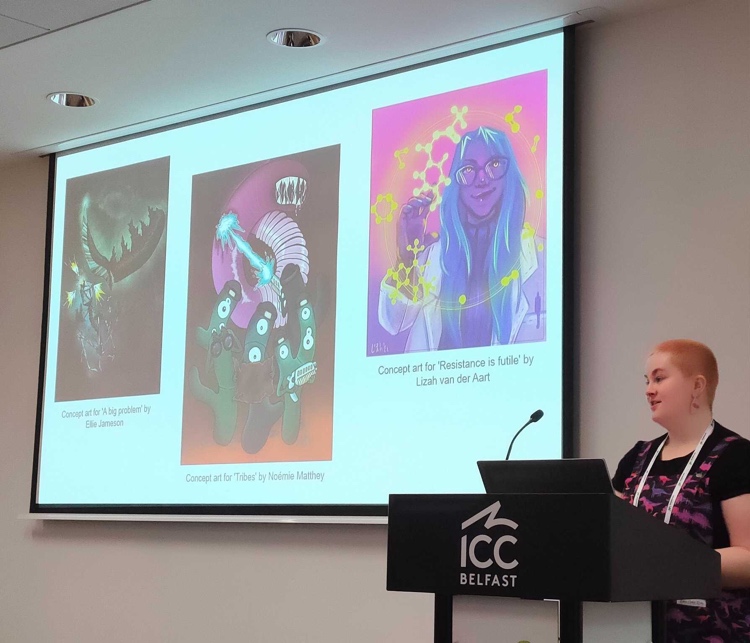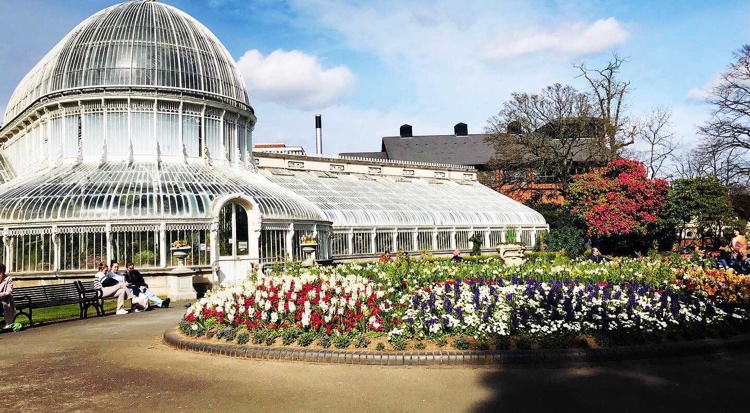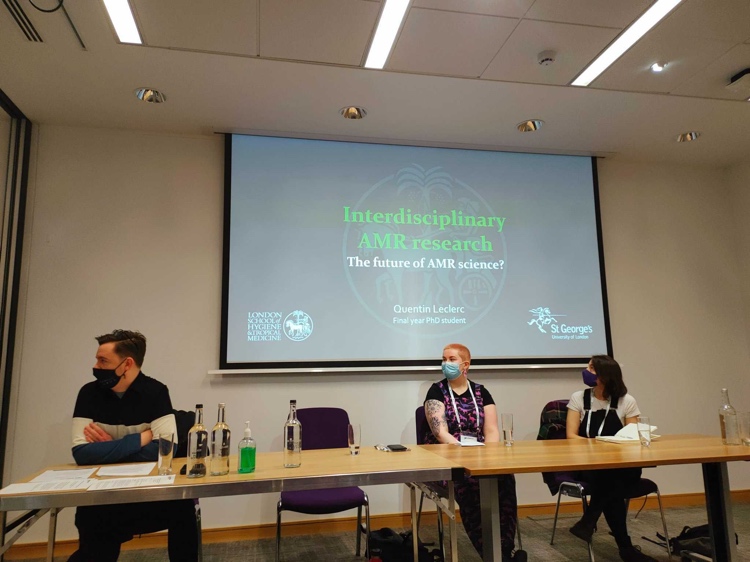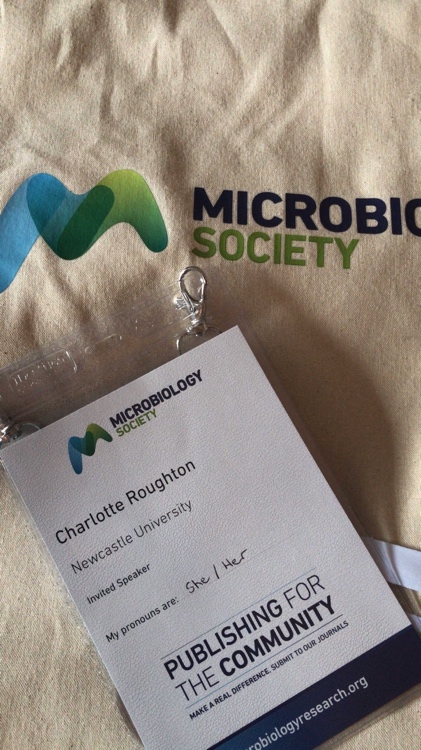
My view of Microbio22
In December 2021, I opened quite a surprising email. The Microbiology Society had noticed my involvement in science communication and public engagement, and invited me to speak about these experiences at their annual conference.
Being riddled with the imposter syndrome that so many of us are familiar with, I was quite taken aback (albeit incredibly flattered) to have been approached with this opportunity. Not only would this be my first in-person conference, but my first time giving a “proper” in-person talk. No more being able to minimise Zoom windows to feel less perceived by the audience… eek!
So, last week, with a mixture of excitement, nerves, and a body full of fresh antibodies from a COVID infection that almost stopped me from going, I flew to Belfast to attend the conference. I’m usually a Travelodge kind of gal (or Premier Inn if I’m really feeling fancy), so rocking up to a Hilton hotel was quite the experience. I arrived early to allow plenty of time to settle in and do some sightseeing before the conference started - luckily the rain held off, which meant I could enjoy the Botanic Gardens followed by the Ulster Museum.

Once the conference started on Monday, the pre-talk nerves really started to kick in. I find it quite ironic that I love public engagement so much, but find public speaking so frightening. As an autistic person, I’ve become fairly adept at putting on a mask and feigning the art of socialising. This translates to my talks as well - I can put on the front of a confident speaker, but immense amounts of preparation go into it. Constant run throughs of the talk until I have every word, joke, inflection, and mannerism perfected. While it works and means I’m regarded as a good speaker, it takes its toll on me afterwards once the adrenaline wears off.
Thankfully, my talk was fairly early on in the conference, on Tuesday morning. The Teaching Microbiology in Higher Education Symposium I opted to attend on Monday was a wonderful distraction from the nerves in the meantime. I enjoyed the insights and creativity from the speakers, and liked that there was both research and non-research talks available to attend. One example that stuck in my mind was Georgios Efthimiou’s use of a board game to teach metabolic pathways - now that would have probably helped me actually remember the Krebs cycle!
Soon, Tuesday came around, and I was seated on a panel along with the other speakers of our session. I was pleasantly surprised by the number of people who came along to listen - I was aware that there were other, research-based talks happening at the same time to compete with, so it was reassuring to see so many people interested to hear what we had to say.

The talk went well. I started by introducing myself and why I’m involved in public engagement in the first place. I discussed my experiences as a first generation researcher, who was brought up by a single parent carer in social housing and was educated at a state school in the North East of England. Getting into science wasn’t the easiest pathway with this background, without parents who could advise and guide me through the process. It’s a big reason behind why I do public engagement - to hopefully help demystify this process for others who are now in the position I was once in. I then moved onto some examples of public engagement projects I’ve been involved in, hopefully demonstrating that science communication and public engagement can come in many forms. It can be fun, exciting, creative, diverse. It can be a sci-fi comic. A drag performance. A stop motion video. A theatrical short film. A Dungeons and Dragons campaign. Injecting our delightfully nerdy personalities into the ways we communicate science broadens the spectrum of public engagement that exists and makes it so much richer.

I was completely taken aback by the volume of positive feedback I received afterwards. I’ve since lost track of the number of people who approached me after the talk and messaged me on Twitter with such kind words, telling me that they enjoyed it and resonated with the content. It was quite nerve wracking adding such a personal touch about my slightly unconventional background in a room filled with strangers, but in the end, I’m pleased I included that vulnerability and ensured that the person and the journey behind the work was represented.
The rest of the conference flew by. As expected, the post-talk exhaustion combined with the overwhelm of constantly networking and being amongst crowds all day, every day, meant many escapes to my hotel room for naps were needed. I didn’t attend the poster sessions, as the sheer busyness at the end of a long day was just not something I had the mental bandwidth to cope with. I thoroughly enjoyed the research talks, though, and left with a renewed sense of excitement for my own work.

An additional highlight of the conference was the LGBTQ+ networking event I attended. I’ve never encountered a conference before that has arranged events specifically for LGBTQ+ scientists, and it was wonderful to spend the evening meeting fellow queer scientists. I felt validated and safe to be myself, and hope to see more events like this at future conferences.
Overall, I had a fantastic time at the conference. I enjoyed meeting both new people and people who I’d connected with on Twitter throughout the pandemic, hearing about the exciting array of microbiology research being carried out (especially by early career researchers), and being given the platform to share and discuss something that I love and feel hugely passionate about. A big thank you to the Microbiology Society for putting on such an amazing event, and for giving early career researchers like myself the opportunity to share our work.